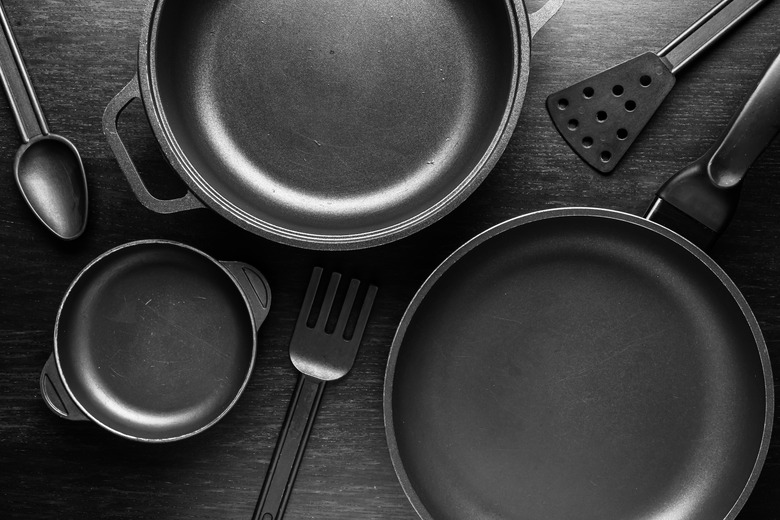What Are The Dangers Of Xylan Nonstick?
We may receive a commission on purchases made from links.
Xylan is a dry film lubricant that is often used as a coating on nonstick pots and pans. While Xylan nonstick pans and bakeware can help you prepare meals quickly and without oil or heavy cleanup, there are certain dangers associated with the use of items coated this way. By knowing how to properly use and maintain Xylan-coated pans, you should be able to avoid many of these dangers.
Tip
While Xylan and Teflon are chemically inert when used properly, if overheated they emit toxic fumes that can cause respiratory problems in humans and kill pet birds.
Xylan Coating Care
Xylan Coating Care
Xylan can withstand temperatures up to 500 degrees Fahrenheit. It is unlikely, though not impossible, that you would be cooking your food at temperatures this high in your home kitchen. To avoid reaching or exceeding 500 degrees, do not heat empty pans as this can cause them to reach temperature faster.
Over 500 degrees, Xylan molecules begin to break down, and over 600 degrees, they can even release a toxic chemical known to kill pet birds and harm humans. The higher the quality of your cookware, the less likely you are to have these issues. This is because inexpensive cookware tends to be less heavy-duty and may heat up more quickly.
Use wooden or silicone utensils to avoid chipping your pans when mixing food and serving from your Xylan nonstick cookware. While not necessarily harmful to ingest, as PTFE is an inert chemical and will pass through your system without being absorbed, it's best not to eat chips from the coating. Use caution with plastic utensils, they can melt and damage the nonstick coating. In addition, if the coating begins to peel, the nonstick properties of your cookware will be lost.
Washing Xylan-Coated Cookware
Washing Xylan-Coated Cookware
Allow your pots, pans, and bakeware to cool completely before you attempt to clean it. More importantly, never submerge hot Xylan-coated pots or pans in dishwater, especially cold or cool water. This can present significant stress to the cookware and lessen its longevity.
To avoid scratching your cookware, do not use harsh sponges or scouring pads to wash it. Instead, choose a microfiber dishcloth or a soft sponge. Soak to loosen any stuck-on food or buildup, then rub gently to remove food particles and put the power of soaking in lukewarm dishwater to work on tough messes.
To avoid significant messes or crusted food, try to clean your nonstick pots and pans as soon as you have used them and they are reasonably cool. Since they have the nonstick Xylan-coating, you can scrape remaining food off before the pans cool using the same wood or silicone utensils that you use to serve food. This will help extend the life of your Xylan-coated cookware.
Xylan Vs. Teflon Coatings
Xylan Vs. Teflon Coatings
Both Xylan and Teflon coatings are chemically polytetrafluoroethylenes (PTFE). Both can cause breathing issues when heated above 500 degrees Fahrenheit, so regardless of which coating is used on your nonstick cookware, you should avoid cooking your food at such high temperatures.
When purchasing nonstick cookware, be aware that Teflon is a brand name produced by DuPont. Many brands, like Jamie Oliver cookware and items made by Ikea, use Teflon as their nonstick coating, though it can vary depending on the manufacturer.
Not all nonstick coatings are made of Teflon, and not all nonstick coatings have the same chemical composition. In many cases, Whitford is the company that makes Xylan. You can find it on products like woks from Joyce Chen or Helen Chen.
